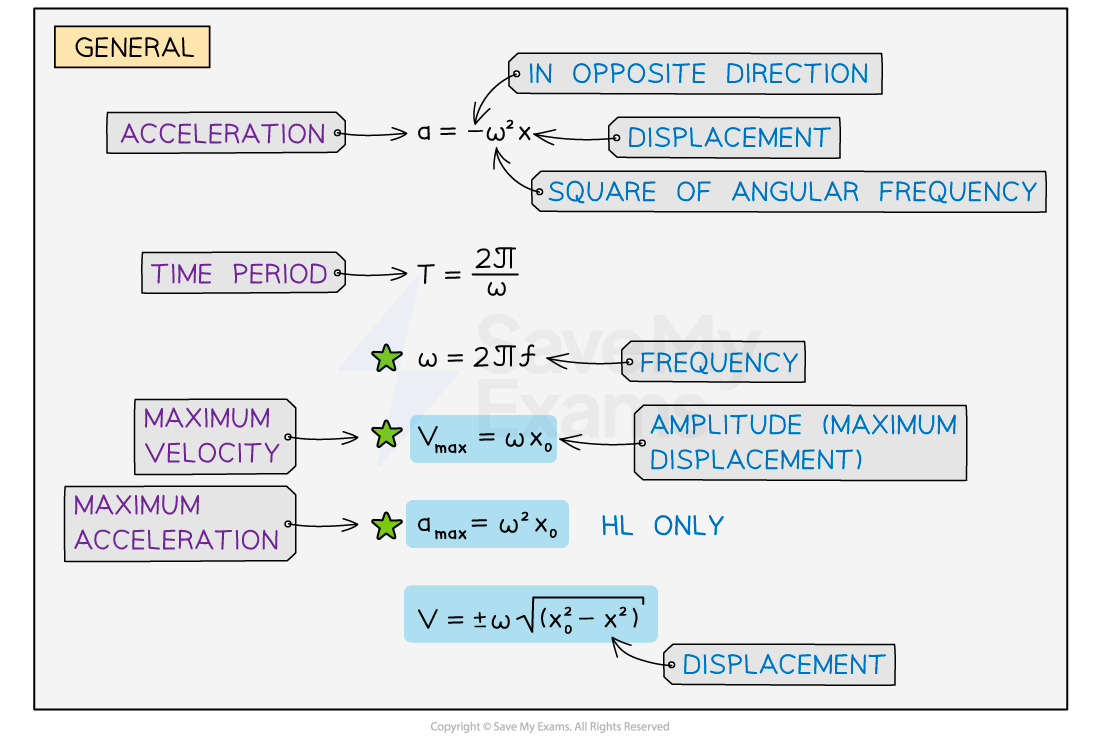Equations for Simple Harmonic Motion
- There are many equations to learn in the topic of simple harmonic motion
- The key equations are summarised below:



A summary of the equations related to simple harmonic motion. The green stars indicate equations which are not included in the IB data booklet and the highlighted equations are for HL students only
Worked example
The graph shows the potential energy, EP, for a particle oscillating with SHM. The particle has mass 45 g.

Answer:
(a)
Step 1: Use the graph to determine the maximum potential energy of the particle

- Maximum potential energy, EPmax = 60 mJ = 60 × 10−3 J
Step 2: Determine the amplitude of the oscillation
- The amplitude of the motion
is the maximum displacement
- At the maximum displacement, the particle is at its highest point, hence this is the position of maximum potential energy
- From the graph, when EP = 60 mJ:
= 8.0 cm = 0.08 m
Amplitude:
Step 3: Write down the equation for the potential energy of an oscillator and rearrange for angular velocity ω
Step 4: Substitute the known values and calculate ω
- Mass of the particle, m = 45 g = 45 × 10−3 kg
Step 5: Determine the time period of the oscillation
= 1.1 s
(b)
- The maximum speed of the oscillator is equal to
= 5.77 × 0.28 = 1.6 m s−1
Worked example
A student investigated the behaviour of a 200 g mass oscillating on a spring, and produced the graph shown.

Answer:
(a)
- Read the values of amplitude and time period from the graph

- Amplitude,
= 0.3 m
- Time period, T = 2.0 s
(b)
Step 1: Write down the equation for the maximum speed of an oscillator
Step 2: Write down the equation relating angular speed and time period
Step 3: Combine the two equations and calculate the maximum speed
= 0.942 m s−1
Step 4: Use the maximum speed to calculate the maximum kinetic energy of the oscillating mass
- Mass of the oscillator, m = 200 g = 0.2 kg
Exam Tip
There are a large number of equations associated with SHM. Most of them are given in the data booklet which you will be given to use in the exam
Make sure you are familiar with the equations, as you will probably need to use several different ones to solve the longer questions.

